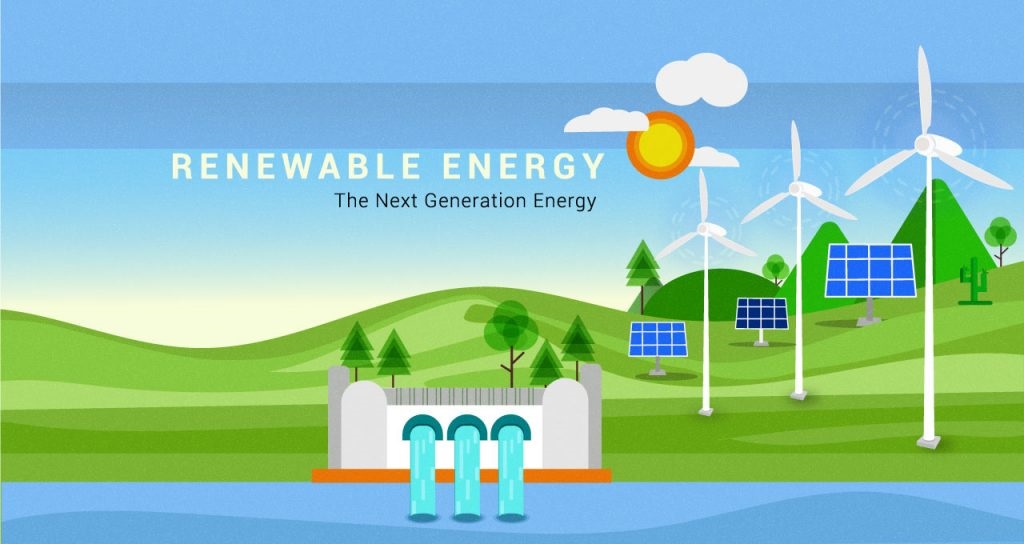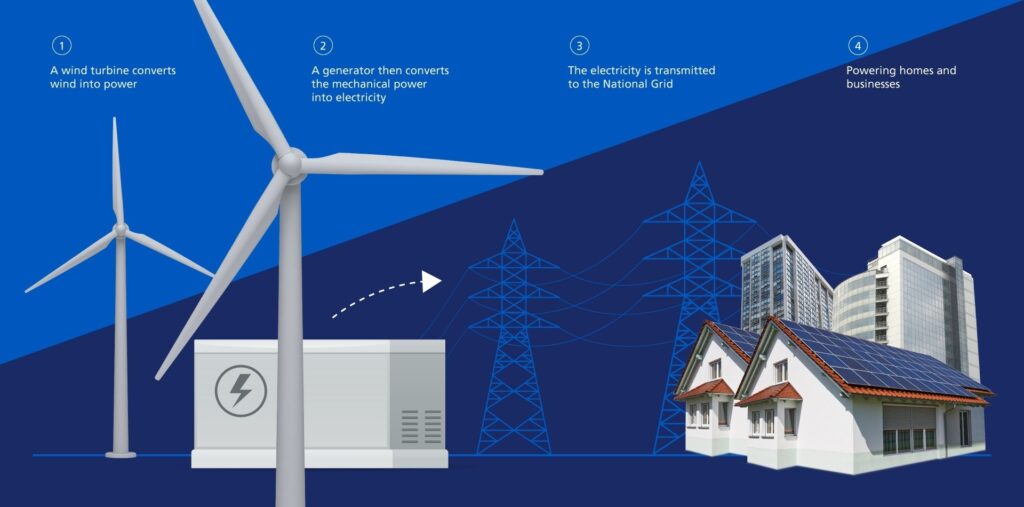
Under the background of the rapid development of the global economy, the demand for non-renewable resources such as natural gas, coal, and oil continues to increase. The excessive exploitation and utilization of these resources have caused serious damage and pollution to the environment, and the resource reserves are also rapidly decreasing.
To achieve the harmonious development of human beings and the environment, energy and the environment must be put on the agenda. Wind power generation is a new technology that utilizes wind energy. Permanent magnet generators have the characteristics of reliable operation, high efficiency, and high power density.
The application in the wind power generation system can effectively improve the production level and efficiency of the wind power generation system.
Therefore, the research on the application and development of the permanent magnet generator in the wind power generation system has very important practical significance.
1 Application of permanent magnet generator in wind power generation system

1.1 Analysis of types and characteristics of wind power generation systems
From the perspective of generator structure, wind power generation systems include four types, namely, low-speed direct-drive permanent magnet wind power generation systems, medium-speed semi-direct drive permanent magnet wind power generation systems, high-speed permanent magnet wind power generation systems, and high-speed double-fed wind power generation systems.
1.1.1 Low-speed direct drive permanent magnet wind power generation system

As shown in the low-speed direct-drive permanent magnet wind power generation system, the megawatt-level direct-drive permanent magnet wind turbine has the characteristics of a large number of winding turns, low frequency, a large number of poles, large diameter, and low speed.
Therefore, there are differences in the design characteristics of medium-speed permanent magnet generators and high-speed permanent magnet generators. Among them, low-speed permanent magnet generators have a large volume and a large number of materials, especially the large number of permanent magnet materials, which are expensive and will increase costs.
Therefore, based on cost considerations, the following aspects should be considered in the low-speed direct drive permanent magnet wind power generation system:
① The structure design of the generator should adopt three types: transverse flux structure, axial flux structure, and radial flux structure;
② Cooling method design, usually adding heat dissipation ribs outside the stator casing, which can be used for natural air cooling;
③ Electromagnetic load design should strictly control the current density of the stator winding, not too high, to prevent excessive winding turns from increasing power loss.
1.1.2 Medium-speed semi-direct drive permanent magnet wind power generation system
The design of this type of wind power generation system is relatively flexible, and the design difficulties include two aspects: the rated speed of the generator and the operating speed range. Under normal circumstances, the medium-speed semi-direct drive permanent magnet wind power generation system adopts a single-stage or two-stage speed-up structure.
1.1.3 High-speed permanent magnet wind power generation system
High-speed permanent magnet wind power generation system, the advantages of this type of wind power generation system are as follows: reduces the weight and volume of the motor, effectively increases the power density of the motor; reduces the iron loss and copper loss of the rotor, which can not only improve the operating efficiency of the motor but also save costs; Elimination of brushes and collector rings improves the safety and stability of motor operation.
1.1.4 High-speed doubly-fed wind power generation system
High-speed double-fed wind power generation system, the stator winding voltage frequency of this type of wind power generation system is affected by the grid frequency, and the number of poles of the motor can only be determined by the rated speed. At the rated speed, the current frequency of the high-speed permanent magnet wind turbine is higher, the required power is smaller, and the cost is lower. However, the rotor loss is high and will generate a lot of heat, which needs to be considered in the design.
1.2 Performance comparative analysis of different types of wind power generation systems
1.2.1 Cost Analysis
The structures of permanent magnet wind power generation systems with different structures are different, and there are certain differences in their manufacturing costs. However, affected by many factors such as raw materials, processing costs, and market prices, it is difficult to accurately compare the costs of permanent magnet wind power generation systems with different structures. Comparison in several aspects: the generator is an important part of the wind power generation system, and occupies a very large proportion of the total system cost. Taking a 2 MW direct drive permanent magnet wind power generation system as an example, the cost of the generator accounts for 25% of the total cost, the cost of the wind turbine is 29%, the cost of electric control/converter is 15%, the cost of drive chain is 12%, and the cost of transformer is 2%. The total cost of a high-speed permanent magnet wind power generation system is 34% lower than that of a low-speed direct drive permanent magnet wind power generation system.
1.2.2 Analysis of operation reliability
Since there is no gearbox and no collector ring brush, the operating reliability of the permanent magnet wind power generation system with four different structures is as follows from high to low: low-speed direct drive permanent magnet wind power generation system, medium-speed semi-direct drive permanent magnet wind power generation system, high-speed permanent magnet wind power generation system, high-speed double-fed permanent magnet wind power generation system.
1.2.3 Analysis of power generation
Taking a 2 MW generator as an example, the average power generation of four permanent magnet wind power systems with different structures from high to low is as follows: medium-speed semi-direct drive permanent magnet wind power system (104.4%), low-speed direct drive permanent magnet wind power generation system (103.0%), high-speed permanent magnet wind power generation system (101.7%); high-speed double-fed wind power generation system (100%).
2 Analysis of the development trend of permanent magnet wind power generation system

2.1 Motor Control Technology
The development direction of motor control technology for permanent magnet wind power generation systems is mainly focused on improving unit efficiency, power quality, and operational reliability. From the perspective of generator control and power conversion control, the use of multi-winding and multi-phase structures can not only improve the reliability of the system operation and ensure the output of the motor.
2.2 Motor cooling technology
In recent years, the research and development of motor cooling technology have been very active. The development of motor cooling technology mainly includes the following aspects: high-temperature superconducting technology, which is mainly based on the development of low-cost high-temperature superconducting wires and is still in the experimental stage; Cooling technology, which has the advantage of small influence on motor efficiency, increased current density, and less copper consumption
2.3 Motor manufacturing process
Motor manufacturing is developed in a modular direction, mainly because this manufacturing method is convenient for manufacturing, transportation, on-site installation, and maintenance.
2.4 Motor structure type
In the future, the structure of the motor will mainly develop in the following aspects: combined permanent magnet motor, which proposes a multi-rotor, multi-stator transverse flux, and axial flux permanent magnet wind generator, which significantly improves the power density and reduces the size of the motor; Ironless stator permanent magnet motor, which can reduce motor noise and vibration, eliminate cogging torque ripple and reduce motor weight.
3 Conclusion
All in all, there are many structural types of permanent magnet wind power generation systems, and the permanent magnet force generator technology is gradually developing towards combination, structural form diversification, and manufacturing process modularization, which continuously improves the operational reliability and efficiency of wind power generation systems.